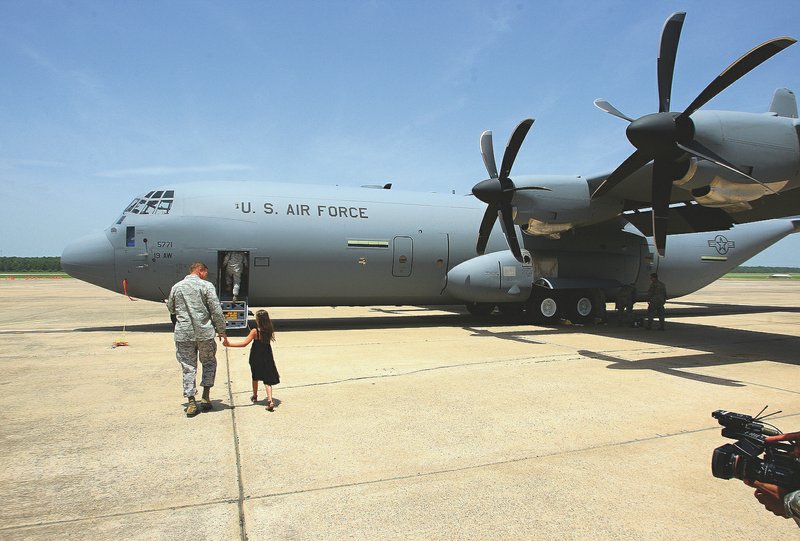Seventeen U.S. Air Force C-130 aircraft assigned to Little Rock Air Force Base were among 123 of the venerable airlifter that were temporarily grounded this week to determine whether they had cracks in their center wing joints, which can jeopardize the integrity of the aircraft and the safety of crews.
All 17 underwent mandated eight-hour in-depth inspections that included X-rays and no cracks were found, said Capt. Beau Downey, a spokesman for the base's host unit, the 19th Airlift Wing.
"As a result, these aircraft were immediately returned to service with minimal impacts to flying operations, allowing us to continue our mission to provide tactical airlift to meet our nation's mobility needs," he said in an email Friday afternoon.
Still, the grounding of more than a quarter of the Air Force's fleet of 450 C-130s across active-duty, Reserve and National Guard units posed a potentially serious challenge to the base near Jacksonville, home to the largest C-130 fleet in the world.
More than a dozen years ago, similar circumstances grounded or restricted 33 C-130s assigned to the base, reducing flight hours and training to a degree that base units were forced to borrow aircraft. That grounding took years to overcome.
The host 19th Airlift Wing is an active-duty unit, with its aircraft called upon to fly military airlift of personnel and cargo and disaster relief missions around the world, particularly in Southwest Asia.
Two other units at the base, the 314th Airlift Wing and the 189th Airlift Wing, train aircrews and maintenance personnel for C-130s across all branches of the U.S. military, the U.S. Coast Guard and 47 allied nations.
The 314th is an active-duty unit specializing in the C-130J Super Hercules, the latest generation of an aircraft that entered service in the Air Force 63 years ago. The 189th is an Arkansas Air National Guard unit that trains pilots, navigators, flight engineers and loadmasters on the older generation of the aircraft still flying, the C-130H Hercules.
The 189th has a total of 12 H models. Of those, five met the requirements for the temporary grounding because they lack an extended service life center wing box and had accumulated 15,000 equivalent flight hours, said Col. Dean Martin, commander of the 189th.
The unit has three maintenance shifts that allowed the inspections to be completed by Thursday, he said. All five aircraft were returned to service.
"The safety of our aircrews is paramount," Martin said.
The inspections came after Gen. Maryanne Miller, commander of the Air Force's Air Mobility Command at Scott Air Force Base in Illinois, which is responsible for the C-130 fleet in Illinois, on Wednesday ordered the removal of 123 C-130s after "atypical cracks" were discovered in a National Guard C-130 undergoing scheduled heavy maintenance.
The cracks were discovered in the lower center wing joint or "rainbow fitting." The center box wing sits atop the aircraft fuselage and connects to the two outer wings.
In consultation with aircraft maintenance and engineering experts, Miller directed an inspection to identify and correct any cracking to ensure airworthiness of these C-130 aircraft, according to a news release.
The planes affected include 32 examples the C-130J and 91 C-130H models. By the end of the day Thursday, a total of 23 had undergone an inspection, according to Maj. Jonathan Simmons, a spokesman for the Air Mobility Command. No defects were detected and all 23 were returned to service, he said.
"The Air Force takes the safety of its airmen and aircraft very seriously and is working diligently to identify and repair affected aircraft as soon as possible," the Air Mobility Command said in the news release.
The command also said the temporary grounding wasn't expected to affect C-130 support for overseas military operations.
"At this time, it has been assessed that this temporary removal of service will not impact ongoing C-130 support to overseas contingency operations."
The C-130, powered by four turboprop engines and designed to take off and land on short, unprepared runways, has been the backbone of U.S. military tactical airlift since it first entered service in 1956. It is the longest continuously produced military aircraft.
A Section on 08/10/2019

